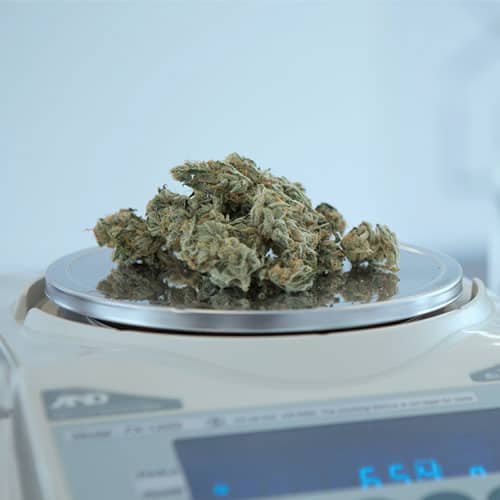 £0 0 item
£0 0 item 
Published: 30-01-2024
In the ever-evolving realm of cannabis enthusiasts, precision is of paramount importance, especially when it comes to measuring the cherished herb. Whether for personal use or strict adherence to legal guidelines, mastering the art of weighing weed is undeniably a fundamental skill. Furthermore, accurate measurements not only ensure responsible consumption but also play a pivotal role in crafting the perfect cannabis experience.

In this comprehensive guide, we embark on a journey to demystify the nuanced process of weighing weed. Along this informative pathway, we'll share valuable insights, techniques, and essential tips, aiming to empower both novices and seasoned users alike. Join us as we delve into this essential practice, unraveling the key to achieving precision in every measurement.
Before delving into the art of weighing weed, it is crucial to familiarise yourself with the measurement units used in the cannabis community. Understanding these units not only facilitates accurate measurements but also ensures seamless communication. Let's explore the primary measurement units and their conversions:
The gram is the standard unit for measuring weed on a smaller scale—precise and commonly used for personal use or smaller quantities.
For larger quantities, ounces are preferred, with approximately 28 grams in an ounce—convenient for personal and commercial transactions.
In certain instances, especially within commercial settings, pounds may find usage. A singular pound is approximately equivalent to 16 ounces.
Conversions:
Being comfortable with these units and their conversions is essential for anyone handling or using cannabis.
Selecting an appropriate scale for weighing weed is a critical decision impacting measurement accuracy. With a plethora of scales available, make an informed choice based on your specific needs. Here's a guide to help you navigate the process:
Prioritise accuracy when selecting a scale. Seek one that delivers precise measurements, particularly for weighing smaller quantities.
Opt for a digital scale over analogue. Digital scales are more reliable, provide quicker readings, and often come with additional features like taring.
Consider the scale's capacity based on your typical usage. For weighing larger quantities for commercial purposes, a scale with higher capacity is necessary.
For personal use or on-the-go weighing, choose a portable scale. Compact designs with durable materials are ideal for maintaining discretion and convenience.
Ensure the scale has a tare function to zero the scale with the container on it, ensuring you measure only the weed, not the container weight.
A scale with a calibration feature is advantageous. Regular calibration ensures ongoing accuracy in your measurements.
If in a region with specific cannabis-related regulations, ensure the scale complies with legal requirements for commercial transactions.
Choose scales from reputable brands known for producing reliable and accurate weighing instruments.
While quality is essential, consider your budget. Reliable scales are available at various price points.
Remember, the right scale is an investment in accurate measurements, ensuring you navigate the world of weighing weed with precision and confidence.
Calibrating your scale is a crucial step in maintaining measurement accuracy. Even the most advanced scales can drift over time, affecting the reliability of readings. Follow these steps to ensure consistent calibration for precise measurements:
By adhering to these calibration procedures, you guarantee the accuracy of your scale and enhance the reliability of your weed measurements.
Accurate weighing extends beyond placing a substance on a scale. Master the following techniques for precision in your weed measurements:
Incorporating these techniques enhances the accuracy of your weed measurements, whether for personal use or legal compliance.
Weighing weed, whether in smaller or larger quantities, requires a nuanced approach. Consider the following tips based on the quantity you are dealing with:
Remember, accurate weed measurements contribute to responsible consumption and adherence to legal limits. Whether a seasoned user or new to cannabis, these insights empower you to approach weed weighing with confidence.
In the realm of weighing weed, precision is the cornerstone of a responsible and enjoyable cannabis experience. As we conclude this guide on mastering the art of weed measurement, let's recap the key takeaways:
Accurate weed measurements contribute to responsible consumption and adherence to legal standards. Whether a seasoned user or new to cannabis, these insights empower you to approach weed weighing with confidence and competence. As you embark on your cannabis journey, may your measurements be precise, your experiences enjoyable, and your knowledge ever-expanding. Happy weighing!
